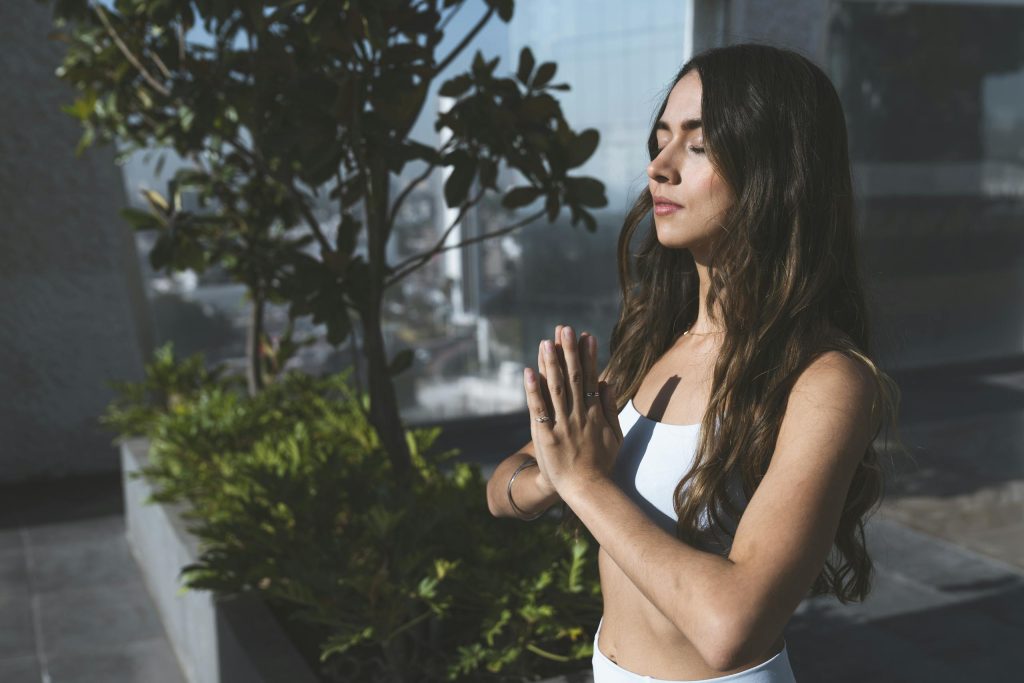Integrating Breathing Practices in Bath Meditation: Techniques to Enhance Mental Clarity and Reduce Anxiety

Welcome to a New Era of Calm
In today’s fast-paced world, finding moments of peace can seem impossible. Integrating breathing practices into bath meditation can be a transformative experience, helping individuals enhance their mental clarity and significantly reduce anxiety.
Why Focus on Breathing?
Breathing is not just a physiological process; it’s a powerful tool that influences our mental state. Here are a few compelling reasons to incorporate breathing techniques:
- Promotes relaxation: Deep breathing can trigger a relaxation response in the body, helping to lower heart rates and reduce blood pressure. This physiological change can make a noticeable difference in how we feel emotionally.
- Enhances mindfulness: Focusing on breath helps anchor the mind in the present moment. In busy cities like Lagos, where the hustle and bustle can be overwhelming, taking a moment to breathe mindfully can help ground you amidst chaos.
- Regulates emotions: Controlled breathing helps manage emotional responses, promoting well-being. Techniques such as the 4-7-8 method, where you inhale for four counts, hold for seven, and exhale for eight, can be particularly effective in managing stress and anxiety.
The Art of Bath Meditation
Bath meditation merges the soothing properties of water with the calming effects of mindful breathing. Imagine transforming your bath into a peaceful sanctuary, allowing the warm water to envelop you while you practice intentional breathing. The practice of bathing traditionally holds great significance in many cultures—including Nigeria, where rituals often incorporate water as a cleansing and restorative element.
Incorporating breathing practices into your bath time can turn an ordinary routine into a sacred ritual. As you lower yourself into the warm water, allow your body to fully relax. Close your eyes, inhale deeply through your nose, and visualize stress leaving your body with each exhale. This transformative experience not only fosters a sense of tranquility but can also foster creativity, making it a perfect retreat after a long day.
To enhance your bath meditation, consider adding elements that resonate with your cultural background. Essential oils like eucalyptus or lavender can be incorporated for added therapeutic benefits, as they promote relaxation and well-being. Alternatively, playing calming music or natural sounds, such as waves crashing or birds singing, can deepen the meditative experience.

As you explore this serene pathway to peace, keep in mind that consistency is key. Regular practice can amplify the benefits of bath meditation, allowing you to cultivate a deeper sense of calm and resilience. By embracing the art of breathing in conjunction with bath meditation, you set the stage for a holistic approach to mental wellness.
This method not only benefits your mental health but also can become a cherished part of your daily routine, shaping a new era of calm in your life, allowing your mind and body to rejuvenate together.
SEE ALSO: Click here to read another article
Transform Your Bath Time into a Mindfulness Sanctuary
Integrating breathing practices into bath meditation is a simple yet profound method to foster mental clarity and alleviate anxiety. The soothing properties of warm water combined with intentional breathwork create an ideal environment for self-reflection and emotional healing. This ritual can bring about not only a sense of calm but also clarity of thought, making it a valuable addition to anyone’s daily routine. In Nigeria, where cultural practices often intertwine with holistic wellness, this approach resonates deeply with our traditions of using water for both cleansing and therapeutic purposes.
Key Breathing Techniques to Use in Bath Meditation
To fully benefit from the integration of breathing techniques during bath meditation, one can choose from a variety of methods that resonate most with them. Below are some effective techniques that can enhance your meditative experience:
- Diaphragmatic Breathing: Also known as abdominal or belly breathing, this technique engages the diaphragm, helping you take deeper breaths. As you sit in the bath, place one hand on your belly and inhale deeply through your nose, allowing your abdomen to expand. Exhale slowly through your mouth, feeling your belly contract. This practice not only promotes relaxation but can also improve oxygen flow to the brain, enhancing mental clarity.
- Box Breathing: Often used by athletes and military personnel, box breathing involves inhaling, holding the breath, exhaling, and holding the breath again for equal counts—commonly four seconds each. As you immerse yourself in warm water, visualize a box; inhale for four counts, retain for four, exhale for four, and pause for another four. This rhythmic breathing technique can effectively calm the nervous system and refocus your thoughts.
- Nasal Alternate Breathing: This ancient Hindu practice called Nadi Shodhana balances the body’s energy channels. Close one nostril with your thumb and inhale deeply through the open nostril, then switch and exhale through the other nostril. This can be particularly beneficial during bath meditation, as it encourages balance and deep relaxation.
Including these techniques in your bath meditation ritual can enhance your overall experience, shifting your focus away from daily stressors towards a peaceful state of mind. As you practice these breathing exercises, embrace the sensation of warm water on your skin and the fragrant aroma of your chosen bath oils. This multisensory experience fosters a deep sense of mindfulness and connection to the present moment.
Moreover, consider personalizing your meditative bathing experience with elements that enhance not just your physical comfort but also your mental engagement. Think about adding calming essential oils such as peppermint or chamomile, which can further promote relaxation and mental clarity. Drawing inspiration from your surroundings and cultural practices, perhaps play soft traditional music or nature sounds that resonate with you, enriching the atmosphere of tranquility.
Your bathing ritual, paired with deliberate breathing practices, serves as a precious antidote to the demands of modern living, allowing for a transformative experience that nurtures both body and mind.
| Advantages | Details |
|---|---|
| Enhanced Focus | Integrating breathing practices in bath meditation promotes mental clarity, allowing for better concentration on the present moment. |
| Reduction of Anxiety | Breathwork combined with the calming effects of warm water can significantly lower anxiety levels, creating a serene atmosphere. |
| Emotional Regulation | Practicing controlled breathing techniques during bath meditation aids in emotional regulation, leading to better management of stress. |
| Physical Relaxation | The combination of breath control and the soothing properties of bath water enhances overall physical relaxation. |
Integrating breathing practices into your bath meditation routine strengthens the connection between mind and body, facilitating a deep sense of tranquility. Techniques like diaphragmatic breathing and slow exhalation have been shown to stimulate a relaxation response, effectively helping individuals manage day-to-day stressors. By filling your bath with calming scents such as lavender or chamomile, and focusing on your breath, you can cultivate a healing environment that encourages mindfulness and self-discovery. Moreover, the ritualistic nature of bath meditation paired with focused breathing can transform an ordinary experience into a profound journey of relaxation. Many practitioners report that this method not only enhances their mental clarity but also provides a powerful tool to combat anxiety. As you explore these practices, you may find unique enhancements to your overall well-being, ultimately leading you to a more balanced life.
LEARN MORE: This related article may interest you
Creating a Holistic Bathing Experience
As you delve deeper into bath meditation with integrated breathing practices, it’s essential to consider the holistic experience that can transform your time in the bath into a sanctuary of wellness. Incorporating sensory elements can significantly enhance your meditative state, elevating both mental clarity and emotional tranquility.
Enhancing Your Bathing Environment
Begin by refining your physical space. A clean, clutter-free bathroom can instantly create a calming atmosphere. Use candles to soften the lighting, opting for gentle, warm tones that promote relaxation. In Nigeria, traditional fragrances such as frankincense or myrrh, often used in cultural spiritual practices, can be incorporated as incense or oils to bring a sense of peace and grounding. These scents not only soothe the spirit but also invoke memories that can inspire introspection and calm.
Furthermore, consider the temperature of the water. Warm baths facilitate muscle relaxation, which complements the breathing techniques you’re practicing. It’s advisable to avoid overly hot water, as it might cause discomfort. Finding that sweet spot where the water is warm enough to soothe but not so hot as to induce fatigue is crucial for maintaining focus during meditation.
The Role of Visualization in Bath Meditation
As you settle into the bath, combine your breathing techniques with visualization methods to enhance your meditative practice. Visualization is a powerful tool that can improve mental clarity while reducing anxiety. Picture yourself in a serene landscape, be it a lush Nigerian rainforest or a tranquil beach. As you breathe in, imagine inhaling the freshness of the environment; on each exhale, visualize letting go of any lingering stress. This practice can deepen your meditative state, allowing you to immerse fully in the moment and draw out clarity from within.
When combined with specific breathing techniques like diaphragmatic breathing, visualization can lead to profound insights. For instance, after several rounds of deep breathing, reflect on any patterns of thought or persistent worries. You may discover connections you’ve overlooked before, leading to a greater understanding of your emotional landscape.
Integrating Mindful Affirmations
In addition to visualization, the incorporation of mindful affirmations can serve as a powerful enhancement to your bath meditation. While you practice your breathing techniques, softly repeat affirmations that resonate with you. Phrases like “I am at peace” or “I release all tension” can reinforce the calming effects of the warm water and your focused breath. In Nigerian culture, affirmations often draw from rich oral traditions. You might choose to adapt proverbs or sayings that inspire resilience, further embedding cultural significance into your practice.
Remember that consistency is essential. Setting aside time each week for bath meditation can foster a sense of ritual, allowing you to cultivate a deeper relationship with your breathing practices and overall mental wellness. This regular commitment can help you navigate daily stresses with increased confidence and clarity.
Engaging with Nature
Moreover, consider enhancing your bath experience by engaging with nature. If your living situation permits, open a window or play nature sounds such as gentle rain or flowing water. In many Nigerian communities, nature is viewed as a source of healing and energy. Tapping into this ancient understanding, let the sounds of the environment further guide your thoughts as you breathe and meditate.
Integrating these elements into your bathing routine can lead to a unique and fulfilling practice that not only addresses anxiety but also nurtures mental clarity, ultimately creating a sanctuary for self-discovery and growth.
RECOMMENDED: Check out this similar article
Conclusion: Transforming Bath Time into a Mindful Retreat
Incorporating breathing practices into your bath meditation opens the door to an enriching experience that significantly enhances mental clarity and promotes relaxation. By creating a soothing environment, employing visualization techniques, and infusing cultural affirmations, you can transform a simple bath into a sanctuary for profound self-reflection and wellness.
The intentional integration of sensory elements—whether it’s the warmth of the water, the gentle flicker of candles, or the natural sounds surrounding you—creates an immersive atmosphere essential for deepening your meditation practice. These practices invite you to engage not only with the physical act of bathing but also with your emotional and spiritual self. As demonstrated, combining traditional methods with modern mindfulness can provide unique insights and lead to emotional resilience.
Establishing a regular ritual centered around bath meditation may serve as a vital tool for navigating life’s stresses, particularly in a fast-paced world. By dedicating time to this practice, you create space for healing and clarity, allowing you to better understand and manage your thoughts and feelings.
Embrace the art of bath meditation infused with thoughtful breathing techniques, and witness the transformation it can bring to your overall well-being. This isn’t just about taking a bath; it’s about engaging in a holistic journey toward inner peace, greater clarity, and a more balanced life. Explore this practice regularly, and let it guide you toward a more serene and centered existence.


